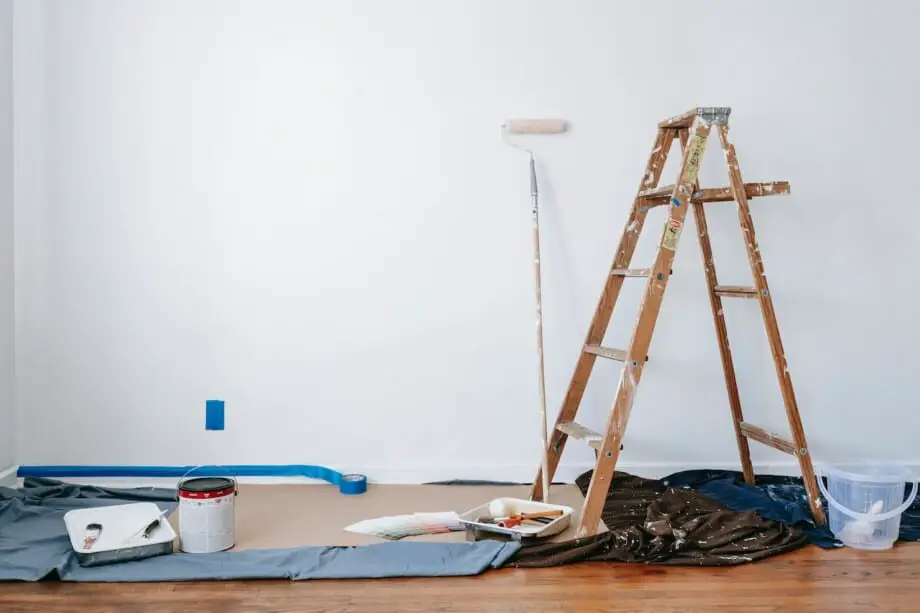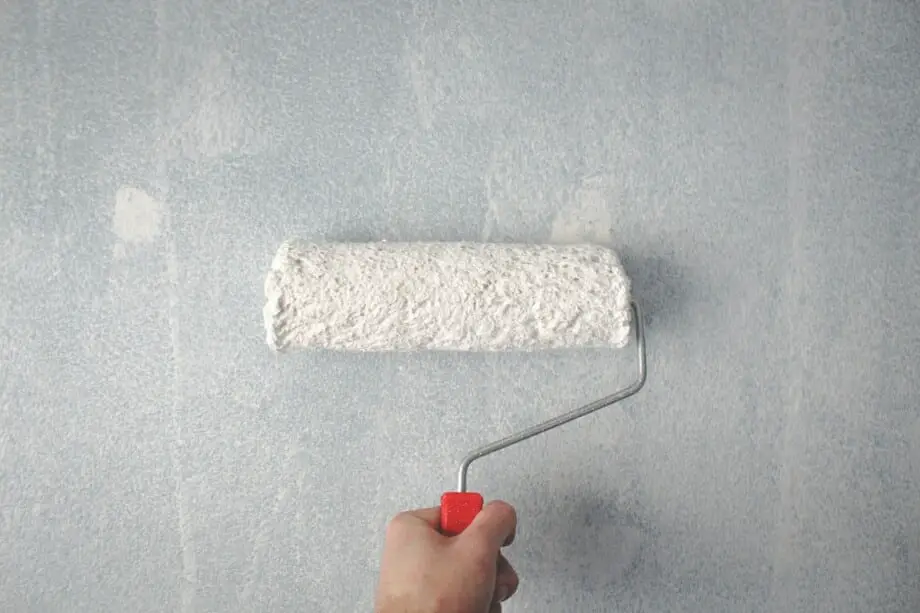My love for painting didn’t pass down so well to my little one. While one of my daughters would always be excited every time I started a project in my house, the other fell sick, sometimes so severely that we had to pause and take her to the hospital. So glad we all have insurance!
This is when I realized that house paints can cause allergies. You may be allergic to specific ingredients in the paint, or sometimes pre-existing allergies and asthma can trigger an adverse reaction.
The best way to protect yourself is to use allergen-free, eco-friendly paints; however, it is better to find out what component is triggering allergies. This way, just like me, you can have an emergency response action plan ready!
What Causes Paint Allergy?
House paints are made up of four basic ingredients. Resins, additives, pigments, and solvents. The chemical nature of these ingredients can be toxic and can trigger allergies.
Chemicals in epoxy resin produce fumes or can create a layer of mist or dust. Overexposure to air containing dust or fumes can trigger allergies irritating the eyes, nose, throat, and skin and even worsen asthma.
Formaldehyde, xylene, benzene, and ethyl acetate are common VOCs used as additives that cause dizziness, headaches, and fatigue and can also trigger asthma. Pigments and solvents often contain toxic heavy metals such as chromium, lead, and arsenic, which are the main cause of skin irritation and allergies.
Symptoms of Paint Allergies
Paint allergies are undesirable reactions to chemicals and toxins present inside paints. The degree of allergic reaction depends on the type of chemical, sensitivity towards that allergen, and duration of exposure.
The most common symptoms of paint allergies are:
1. Skin Irritations
Toxins present in paints can trigger allergies. They are usually seen in the form of redness, itching, swelling, blistering, and cracked skin accompanied by pain. Skin allergies are triggered only when the paint comes into contact with bare skin.
2. Respiratory Problems
The fumes emitted through paints during painting and drying are the leading allergens that attack the respiratory tract. If you experience sneezing, runny nose, congestion, coughing, wheezing, and shortness of breath, there’s a high chance you are allergic to paint.
3. Eye Irritations
Paint allergy symptoms also include redness and itching in the eyes. You may also notice watery eyes with a burning sensation, indicating that you need to rinse them with water and seek medical assistance.
4. Nausea, Vomiting, and Headaches
Nausea, vomiting, and headaches are also symptoms of paint allergies; however, these are some basic symptoms and can also appear due to other reasons.
How Long Do Paint Allergy Symptoms Last?
Ranging from a couple of hours to several days, paint allergy symptoms last according to an individual’s sensitivity and exposure duration. If you are more sensitive to the allergen, symptoms will last longer. Similarly, higher exposure time increases the duration of how long symptoms last.
Taking medical help or your staple anti-allergen is advised to help relieve symptoms as soon as possible.

How to Prevent Allergies from Paint? – Precautions to Take
I’m sure you’ve heard that prevention is better than cure. At first, I thought I had to give up on my passion for painting. After all, I couldn’t see my little one suffering each time I took up a project.
Luckily, I have devised a comprehensive list of precautions that allow me to paint without triggering allergies. Give it a read, and you’d thank me for eternity:
1. Allergy Friendly Products
The ideal solution is to use allergy-friendly paints, approved by the Asthma and Allergy Foundation of America (AAFA), so that you have one less thing to worry about and can express your creative side freely.
2. Keep the Area Well Ventilated
To avoid allergic reactions, adequate ventilation and air filtration are important measures. Fumes should be allowed to escape, minimizing the chances of getting them inside your respiratory tract. This is also essential to ensure paint dries up quicker and the fumes don’t linger around
3. Wear your Personal Protective Equipment
Gloves, Masks, and goggles are the basic PPEs all experts recommend wearing as you start painting. They will protect direct contact from toxins, minimizing the risk of allergies.
4. Avoid Exposure to Freshly Painted Areas
Paint fumes are strong 48 hours after painting a wall. This makes the room a toxic zone and must be avoided so that you can stay safe from any allergic reaction. The solvent used in making paints gets absorbed into your skin; therefore, wearing clothes that fully cover the body is important.
Frequently Asked Questions
How do I tell if I have Paint Allergies?
You might have paint allergies if you’re experiencing headaches, nausea, vomiting, eye irritation, coughing, or sneezing when you come across paint buckets or a freshly painted wall. Keep track of symptoms and seek medical advice to prevent worsening symptoms.
PS: Do also read our blog: Is Spray Paint Toxic, and Can Spray Paint Cause Cancer
Can Paint Allergies be Treated?
Paint allergies can be treated with avoidance, medication, and desensitization. Avoidance is the best way to prevent allergic reactions, but if you must be around paint, wear protective clothing and ventilate the area well. Medications and desensitization can help relieve symptoms.
Can I still be exposed to paint chemicals after the paint has dried?
Yes! You can still be exposed to paint chemicals that trigger allergies even after the paint has dried. Paints release harmful chemicals into the air. This is especially true in poorly ventilated areas. To reduce exposure to these chemicals, use a high-quality air purifier and ensure proper ventilation.
Summing it Up
Understanding the potential risks and symptoms of paint allergies is crucial for anyone engaging in painting projects. While it’s true that some individuals may be more sensitive to certain chemicals than others, taking preventive measures can make a significant difference in minimizing allergic reactions.
Opting for allergy-friendly paints endorsed by reputable organizations such as the AAFA is a wise choice. By taking precautions and staying informed, you can continue pursuing your passion for painting without compromising your health or that of your loved ones. Happy painting, and stay safe!



